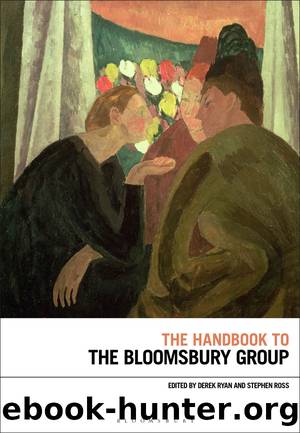The Handbook to the Bloomsbury Group by Ross Stephen;Ryan Derek;

Author:Ross, Stephen;Ryan, Derek;
Language: eng
Format: epub
Publisher: Bloomsbury Publishing Plc
SHAKTI AS BERGSONIAN ÃLAN VITAL
I do not suggest that Anand âappliesâ Bergsonian philosophy to Hinduism, but rather that he shows how Bergsonian ideas accord with Hinduism. While scholars have addressed the significance of Bergsonâs philosophy to modernist ideas and in connection to canonical writers such as James Joyce, Virginia Woolf, William Faulkner, T. S. Eliot and Marcel Proust,7 the connections to Bergson in Anandâs work and the affiliations between Bergsonian philosophy and Hinduism that Anand brings to light have been overlooked. Anandâs discussion of Shakti with Woolf in Conversations in Bloomsbury serves as a precursor to the more directly stated Bergsonian connection in Reflections on a White Elephant, where Anand links Shakti to modernist philosophy when one character exclaims: âShakti is like Henri Bergsonâs élan vital!â (100). Anandâs reference to Bergson in this late novel, in turn, illuminates passages in the earlier Untouchable where his aesthetic experiments should be viewed not only in conversation with Joyce or Woolf, as they often are, but also alongside Henri Bergsonâs philosophy.
Ãlan vital is central to Bergsonâs revisionist thought, and in Creative Evolution (1907) he presents it as an alternative to explanations of evolution that rely on mechanism or finalism. Like all of Bergsonâs ideas â of the image, memory, free will, language, and so forth â his conception of evolution and the élan vital grows from and is thus intricately embedded within his theory of the nature of time (or durée), and all these concepts rely upon the method of intuition. The first chapter of Creative Evolution thus fittingly begins with an explanation of duration. For Bergson, a new understanding of time as despatialized and unordered by the intellect is necessary before a new understanding of evolution is possible. If we think of the future as prescribed by the past, or the present as moving toward a teleological end, we cannot think creative evolution but instead perceive change as already given â fated, determined â because, according to Bergson, we have spatialized the flow of real time, durée. We replace the experience of change with the image of a progression of static states, ending finally at an apex, Homo sapiens, although âthe line of evolution that ends in man is not the only oneâ (xii). As Bergson describes the âfalse evolutionism of [Herbert] Spencerâ, such a conception of change âconsists in cutting up present reality, already evolved, into little bits no less evolved, and then recomposing it with these fragments, thus positing in advance everything that is to be explainedâ (xiiiâxiv). Such an explanation, however, fails to understand the vital impetus, the creative life force, the élan vital â simply, the nature of life itself. As Paul Douglass explains it, the élan vital is âan evolutionary power â protean, self-initiated change â [that] lies at the origin of the universeâ (303). Ãlan vital is a creative, generative force. As such, it is the power of continual de- and regeneration, a dynamism that also shares congruencies with various strands of modernism.
Given Anandâs investment in
Download
This site does not store any files on its server. We only index and link to content provided by other sites. Please contact the content providers to delete copyright contents if any and email us, we'll remove relevant links or contents immediately.
The Power of Myth by Joseph Campbell & Bill Moyers(687)
Four Shakespearean Period Pieces by Margreta de Grazia(676)
A Social History of the Media by Peter Burke & Peter Burke(641)
Inseparable by Emma Donoghue(611)
The Complete Correspondence 1928-1940 by Theodor W. Adorno & Walter Benjamin(511)
Bodies from the Library 3 by Tony Medawar(487)
The Spike by Mark Humphries;(470)
Culture by Terry Eagleton(466)
A Theory of Narrative Drawing by Simon Grennan(465)
World Philology by(452)
Ideology by Eagleton Terry;(447)
Farnsworth's Classical English Rhetoric by Ward Farnsworth(444)
A Reader’s Companion to J. D. Salinger’s The Catcher in the Rye by Peter Beidler(432)
Adam Smith by Jonathan Conlin(425)
Comic Genius: Portraits of Funny People by(412)
Monkey King by Wu Cheng'en(403)
Game of Thrones and Philosophy by William Irwin(402)
High Albania by M. Edith Durham(399)
Early Departures by Justin A. Reynolds(384)
